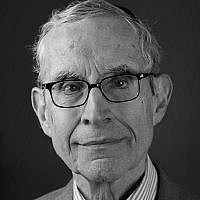-
NEW! Get email alerts when this author publishes a new articleYou will receive email alerts from this author. Manage alert preferences on your profile pageYou will no longer receive email alerts from this author. Manage alert preferences on your profile page
- RSS
Can Tesla Succeed Where Better Place Failed?
Electric carmaker Tesla, Inc. announced plans to open for business in Israel in the new year.On the surface, the move represents good news in the battle against climate change.. December saw the collapse of the Madrid talks, a failure to follow up on the framework of the 2015 Paris Agreement for reduction in emissions of greenhouse gasses. At the same time, the Israel Ministry of Environmental Protection issued a report painting a dystopian picture of Israel’s future, as a result of the Government’s insufficient attention to the current and projected effects of climate change on the country, such as heat waves, drought and torrential rain..
Israel’s Greenhouse Gas Registry lists fossil fuels from electricity generation as the leading cause of the country’s greenhouse gas emissions. However, gasoline and diesel fuel burned in cars and trucks contribute significantly to the climate crisis. Electric vehicles, unlike even hybrids, do not emit any pollution. Electric cars would present a major improvement. In addition, the high cost of gasoline in Israel makes an electric alternative attractive.
However, we have seen this movie before. Between 2008 and 2013, the visionary Shai Agassi tried to introduce electric cars to Israel, through Better Place. He failed. The sequel may well have the same ending.
Agassi’s model envisioned retrofitting existing car models to run on standardized battery packs. He planned for battery pack exchanges at existing gasoline stations, as well as building dedicated facilities. It would take only three minutes, roughly the same time as ordinary replenishment of gasoline cars, to refuel. In contrast, as in the US, Tesla will manufacture new models of electric cars and trucks. As in the US, the vehicles will require charging stations to replenish the battery. Recharging in the US generally takes eight hours in home-based or public stations.
Ease of recharging batteries becomes very important, given the limited driving range of electric vehicles, in comparison with gasoline-fueled cars. Electric cars can travel between 150 km (93 miles) and 528 km (348 miles) on one battery https://www.tesla.com/findus?bounds=51.983501615631575%2C-64.11035275%2C25.500764318167%2C-134.42285275&zoom=5&filters=store. In contrast, gasoline-powered cars average up to 600 km (400 miles) per tank. https://www.google.com/search?q=range+of+gasoline+cars&oq=range+of+gaso&aqs=chrome.1.69i57j0l7.7132j0j7&sourceid=chrome&ie=UTF-8 Gasoline-powered cars can get up to 1176.5 km (731 miles) https://www.cars.com/articles/top-10-vehicles-with-the-longest-driving-range-1420698377103/
Agassi’s simpler and more efficient business model seems easier to implement than Tesla’s idea. Better Place proposed the less expensive concept of using cars from existing manufacturers with a retrofit (as opposed to creating vehicles from scratch) and more practical recharging (three-minute exchange of battery pack at existing gasoline stations), as opposed to between one and 12 hours for Tesla models. https://www.energysage.com/electric-vehicles/charging-your-ev/charging-a-tesla/.
Drivers did not like the car that Better Place sold and they did not save money. While Tesla drivers rave about their vehicles, owning and operating the company’s US cars costs a lot of money. Indeed, in the US, Tesla operates in high-end markets, such as San Francisco, Los Angeles and San Diego, California; Washington DC, Boston, Philadelphia and Florida. https://www.tesla.com/findus?bounds=51.983501615631575%2C-64.11035275%2C25.500764318167%2C-134.42285275&zoom=5&filters=store Prices for new Teslas range between $36,200 and $83,200. https://www.kbb.com/tesla/model-s/ . Most recently, the company achieved an automobile market share of 2%. https://www.statista.com/statistics/519579/market-share-of-tesla-in-the-united-states/
In addition, Better Place could not induce car makers to standardize batteries and, in a small-sized country, such as Israel, Agassi could not achieve economies of scale.https://www.technologyreview.com/s/515526/how-better-place-came-to-a-bitter-end/ Teslas faces the same problem, unless it can sell enough cars to make changing stations economical all over Israel.
More fundamentally, government policies in the US contributed to the growth of zero-emission vehicles. Israel has not instituted similarly comprehensive incentives. In the US, the Clean Air Act allowed California, an environmentally conscious state, to set strict emission standards for automobiles. Given the size of California’s market, in practice, those standards became nationwide rules. That will remain the case, unless the US administration succeeds inn withdrawing that provision. In addition, the US government instituted tax credits for the purchase of electric vehicles, the most recent, between $2,500 and $7,500 per vehicle.
States and cities have added more incentives, as the US Energy Department describes, “Monetary and non-monetary incentives may include additional tax credits, vehicle or infrastructure rebates or vouchers, vehicle registration fee reductions, loans, special low-cost charging rates, and high-occupancy vehicle lane [highway toll] exemptions.” “https://www.technologyreview.com/s/515526/how-better-place-came-to-a-bitter-end/
Of course, by raising the price of fossil fuels, a tax on carbon emissions would underpin a successful electric vehicle industry. However, Israel has not enacted that incentive, either.
Good luck, Tesla.
Related Topics



